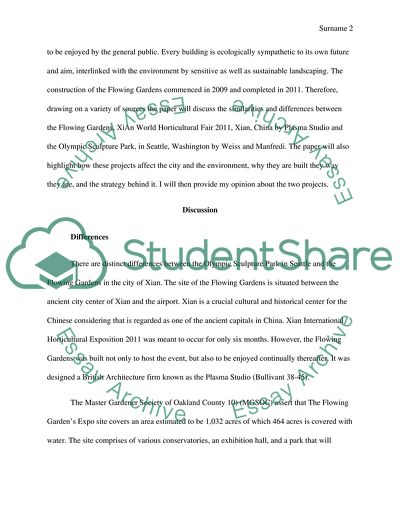Cite this document
(The Flowing Gardens and the Olympic Sculpture Park Essay Example | Topics and Well Written Essays - 2500 words, n.d.)
The Flowing Gardens and the Olympic Sculpture Park Essay Example | Topics and Well Written Essays - 2500 words. https://studentshare.org/architecture/1869561-1flowing-gardens-xian-world-horticultural-fair-2011-xian-china-by-plasma-studio-2-olympic-sculpture-park-seattle-washington-usa-by-weissmanfredi
The Flowing Gardens and the Olympic Sculpture Park Essay Example | Topics and Well Written Essays - 2500 words. https://studentshare.org/architecture/1869561-1flowing-gardens-xian-world-horticultural-fair-2011-xian-china-by-plasma-studio-2-olympic-sculpture-park-seattle-washington-usa-by-weissmanfredi
(The Flowing Gardens and the Olympic Sculpture Park Essay Example | Topics and Well Written Essays - 2500 Words)
The Flowing Gardens and the Olympic Sculpture Park Essay Example | Topics and Well Written Essays - 2500 Words. https://studentshare.org/architecture/1869561-1flowing-gardens-xian-world-horticultural-fair-2011-xian-china-by-plasma-studio-2-olympic-sculpture-park-seattle-washington-usa-by-weissmanfredi.
The Flowing Gardens and the Olympic Sculpture Park Essay Example | Topics and Well Written Essays - 2500 Words. https://studentshare.org/architecture/1869561-1flowing-gardens-xian-world-horticultural-fair-2011-xian-china-by-plasma-studio-2-olympic-sculpture-park-seattle-washington-usa-by-weissmanfredi.
“The Flowing Gardens and the Olympic Sculpture Park Essay Example | Topics and Well Written Essays - 2500 Words”. https://studentshare.org/architecture/1869561-1flowing-gardens-xian-world-horticultural-fair-2011-xian-china-by-plasma-studio-2-olympic-sculpture-park-seattle-washington-usa-by-weissmanfredi.


